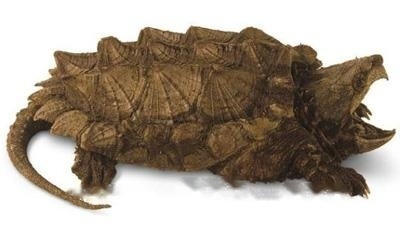
Snapping turtle
Real snapping turtles look like crocodiles fish, Set turtle and crocodile in one, so called true snapping turtle. Its head is relatively thick and cannot be completely retracted in
English name:elaphe gutatta gutatta
Lifetime: 15 years
The corn snake is the most popular breed in the pet reptile market. one. The ever-changing colors and patterns are his most attractive places. Most corn snakes have more than one recessive gene, which makes them highly variable in color and style.
Chinese name: Corn snake
Chinese alias: Corn snake, red rat snake
binomial: elaphe gutatta gutatta
Kingdom: Animalia
Phylum: Chordates Phylum
Subphylum: Chordate
Class: Reptiles
Order: Squamata
Suborder: Snake suborder
Family: Viperidae
Genus: Rat snake
Subspecies: Rat snake
Distribution: Southern United States, Mexico
The overall length is 80-120 cm, and the longest can reach 182 cm. There are many colors, usually gray, taupe to khaki, orange, etc. can be seen. Based on these colors, there are red or reddish-brown markings bordered by black. There are light and dark checkered markings on the abdomen and straight stripes on the ventral surface of the tail. Partially grey individual with black checkered pattern on the abdomen, so it is also called "cornsnake”. This snake is the most variable subspecies, and the snakes in the same nest have horizontal and vertical stripes. Various body color variations have been bred. Such as albino, off-yellow type, off-red type and colorless type, vertical stripe type.
Corn Entering ChinaSnakesThe vast majority are captive-bred, mutants that have been bred. It should be fed under artificial conditions and should not be fed fish, eggs Etc., the artificially reared corn snakes mainly eat small mammals, often using mice. When they are young, they should be fed to suckling mice, and the snake should be fed to small white suckling mice in 1 year, and gradually increase. The temperature is controlled at 28~31 degrees. Below 26 degrees, digestion is slow, it is not easy to feed, and it is easy to enteritis below 24 degrees.
CornSnakeFeeding knowledge
The temperature and humidity control of snakes in the corn environment are very critical. The temperature during the day is very important. Controlled at 24-30°C, it can be maintained at around 19-23°C at night. There is no special requirement for humidity, as long as it is kept dry. However, the temperature should be raised after feeding to help it digest the food.
The box for raising corn snakes needs to be ventilated and sturdy, and a firm locking top cover must be installed to prevent them from coming out. Some dead branches can be arranged in the rearing box for them to climb, It can also help to shake off the old skin when molting. The substrate can be reptile sand or pika wood chips, or even artificial turf or newspaper, as long as it can be kept clean and easy to clean.
The substrate can be aspen sawdust, laying 1-2cm thick, or old newspaper, can prepare a cave for hiding, but it will hinder its taming in the future. Set up a sturdy water pocket in the tank for drinking and bathing. Also prepare a low-wattage red light bulb for night use. In addition to watching at night, it can also be used for normal thermal insulation purposes. In winter, electric felt can also be used for thermal insulation.
Feeding Points for Corn Snakes
The newly purchased corn snakes may refuse to eat in a new environment. At this time, the owner does not need to worry too much, and don't be too hard. Feeding, very few snakes starve to death, let it adapt to the new environment first, and then feed it every few days. If the corn snake refuses to eat, it is recommended to wait 48 hours before feeding, and the types of food should not be too single.
Family-raised corn snakes can be fed with small white mice, 7-10 days apart each time. Remember not to feed too large or too many food, because excessive or too large food will make them vomit, and do not disturb them for a period of time after the next feeding, so as not to vomit, because corn snake larvae will vomit after eating. Vomiting is easily fatal.
The vast majority of corn snakes entering China are artificially bred, through selection of mutants. It should be fed under artificial conditions and should not be fed fish, eggs Etc., artificially raised corn is mainly eaten by small mammals, and mice are often used. It was fed to suckling mice when it was young, and it gradually increased. Once a week, preferably one at a time.